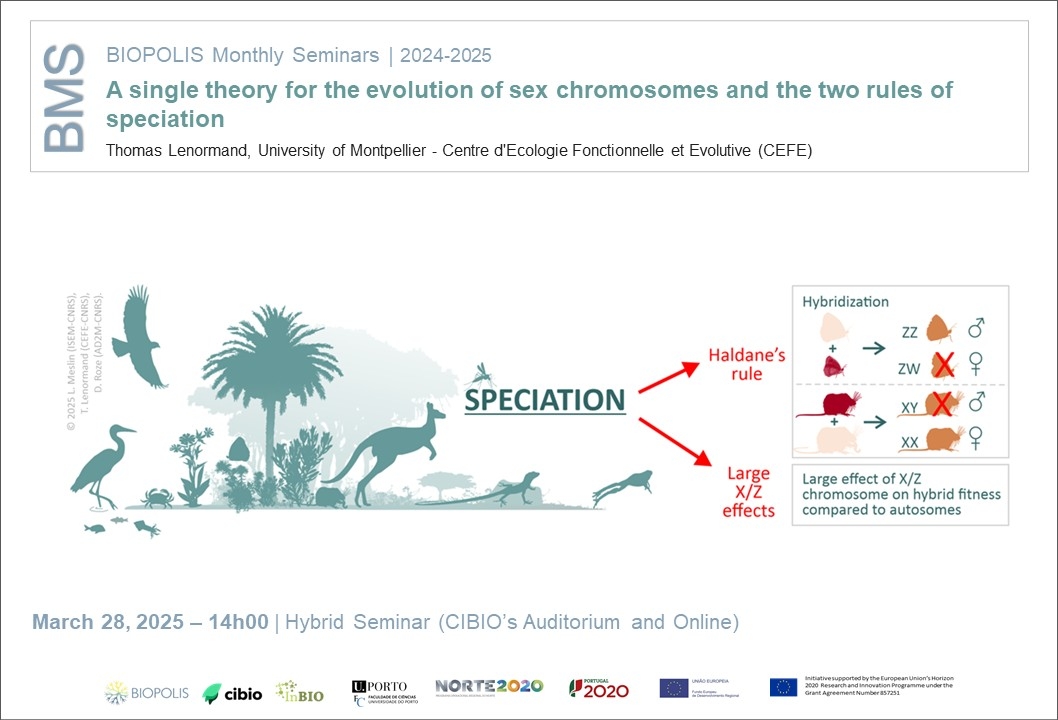A single theory for the evolution of sex chromosomes and the two rules of speciation
Event
Three major empirical patterns involving sex chromosomes have been observed in higher eukaryotes: Y (or W) chromosomes are often non-recombining and degenerate; when two species hybridize, but one sex is sterile or inviable among hybrid offspring, it is most often the heterogametic sex (XY or ZW)—the so-called Haldane’s rule; and the X (or Z) plays a disproportionately large effect on reproductive isolation compared to autosomes—the so-called large X effect. Each observation has generally received its own tailored explanation involving multiple genetic and evolutionary causes. In this seminar, I will show that these empirical patterns all emerge from a single theory for sex chromosome evolution incorporating the co-evolution of cis and trans-acting regulators of gene expression, and leading to systematic and rapid misexpression of dosage-compensated genes in the heterogametic F1 hybrids, for young or old sex-chromosomes. This theory links the evolution of sex chromosomes to the patterns of post-zygotic isolation observed in hybrids.
March 28th, 2025
Thomas Lenormand, University of Montpellier - Centre d'Ecologie Fonctionnelle et Evolutive (CEFE) | 14h00 | Hybrid Seminar

Three major empirical patterns involving sex chromosomes have been observed in higher eukaryotes: Y (or W) chromosomes are often non-recombining and degenerate; when two species hybridize, but one sex is sterile or inviable among hybrid offspring, it is most often the heterogametic sex (XY or ZW)—the so-called Haldane’s rule; and the X (or Z) plays a disproportionately large effect on reproductive isolation compared to autosomes—the so-called large X effect. Each observation has generally received its own tailored explanation involving multiple genetic and evolutionary causes. In this seminar, I will show that these empirical patterns all emerge from a single theory for sex chromosome evolution incorporating the co-evolution of cis and trans-acting regulators of gene expression, and leading to systematic and rapid misexpression of dosage-compensated genes in the heterogametic F1 hybrids, for young or old sex-chromosomes. This theory links the evolution of sex chromosomes to the patterns of post-zygotic isolation observed in hybrids.
Thomas Lenormand is Centre National de la Recherche Scientifique research director at the CEFE laboratory. He is an evolutionary geneticist, combining mathematical theory, statistical developments, laboratory experiments, and field work. His work covers a wide range of issues at the intersection of evolution, genetics, and ecology. He is mainly interested in adaptation, the evolution of genetic systems (sex, asex, meiosis, recombination, sex chromosomes) and the effect of mutations. He was an editor and an associate editor of several evolutionary biology journals, twice an European Research Council laureate, and a Harvard Radcliffe fellow. He has received several awards, including the Dobzhansky Prize from the Society for the Study of Evolution.
[Host: Rui Faria, Seascape Genomics & Speciation - SEAGEN]


